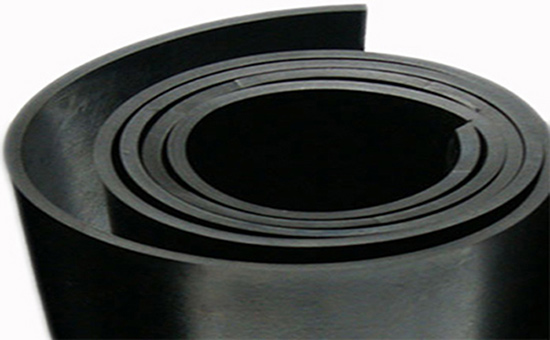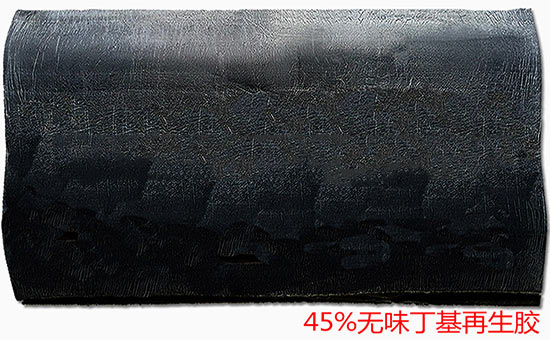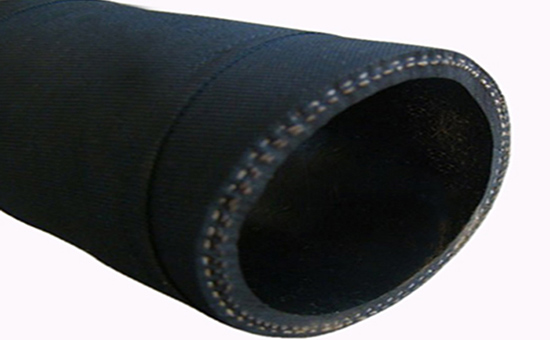
Butyl reclaimed rubber retains the basic performance characteristics of butyl rubber, such as air permeability, heat resistance, and chemical resistance. It can be used alone or in combination with butyl rubber to produce heat-resistant rubber products such as steam hoses, heat-resistant conveyor belts, etc. In actual production, improving the heat resistance of butyl reclaimed rubber can further prolong the service life of heat-resistant rubber products. So what aspects should rubber product manufacturers start from to improve the heat resistance of butyl reclaimed rubber products?
Heat resistance refers to the ability of rubber and its products to maintain physical and mechanical properties or performance after long-term thermal aging. When butyl reclaimed rubber or butyl rubber/reclaimed rubber is used to produce rubber products; to improve the heat resistance of butyl reclaimed rubber products, it may be mainly from these two aspects. to start.
Do you have any other good ways to improve the heat resistance of butyl reclaimed rubber products? I look forward to communicating with you.

1. Combined use of butyl reclaimed rubber and butyl rubber with high degree of unsaturation
In actual production, the heat resistance of butyl vulcanizate increases with the increase of rubber unsaturation. Butyl rubber with high unsaturation has good heat resistance, and the vulcanizate can withstand high temperature of 150 ℃. Mixing a certain proportion of high unsaturated butyl rubber in the formulation of rubber products with butyl reclaimed rubber 2ELYY812 as the main raw material can effectively improve the heat resistance of the rubber. It should be noted that the heat resistance of butyl rubber vulcanized with resin decreases with the increase of unsaturation, and butyl rubber with low unsaturation should be selected at this time.
2. Comparison of heat resistance of vulcanizates of three commonly used vulcanization systems for butyl reclaimed rubber
(1) Sulfur and sulfur donor vulcanized butyl reclaimed rubber: butyl rubber/reclaimed rubber vulcanizate and butyl reclaimed rubber vulcanizate vulcanized with sulfur and sulfur donor can keep good quality after aging at 100-120℃. Use performance; below 140℃, the heat resistance of sulfur-donor vulcanized butyl vulcanizate is better than that of sulfur vulcanizate; but when aging at a temperature above 150℃, the mechanical strength of butyl vulcanizate decreases significantly.

(2) Butyl reclaimed rubber vulcanized by quinone oxime vulcanization system: the physical and mechanical properties of butyl vulcanizate vulcanized with p-quinone dioxime and diphthaloyl benzoquinone dioxime are not good before aging, and the performance is not good after aging at 150 ℃ Great, but vulcanizate aging at 177°C is better than sulfur vulcanizates. The thermal stability of the quinone vulcanized cross-linked structure is good, and the use of p-quinone dioxime, DM and sulfur vulcanization system can obtain a good balance before and after aging.
(3) Vulcanized butyl reclaimed rubber with resin vulcanization system: The vulcanizate using the resin vulcanization system has a unique cross-linked structure and good heat resistance; the performance of butyl resin vulcanizate decreases significantly in the early stage of thermal aging, resulting in the phenomenon of thermal aging. The process is that the resin vulcanizate produces two processes of cross-linking and cracking at the same time. In actual production, reducing the unsaturation of butyl rubber can reduce the aging crosslinking speed of butyl resin vulcanizate.

3. The influence of other compounding systems on the heat resistance of butyl reclaimed rubber products
When using butyl reclaimed rubber as the main raw material to produce heat-resistant rubber products, the type and amount of compounding agents in the softening and plasticizing system will also affect the heat resistance of the rubber compound. In the formulation of heat-resistant butyl reclaimed rubber, it is recommended to use no more than 5 parts of coumarone resin, or soften it with petrolatum, paraffin, mineral rubber or petroleum asphalt resin, and the dosage should be controlled among 10-20 parts; butyl reclaimed rubber Appropriate amount of chloroprene rubber or chlorosulfonated polyethylene rubber can be mixed in the product formula to improve the heat resistance of butyl reclaimed rubber vulcanizate.
Exclusive original article [commercial authorization] reprint, excerpt and excerpt in any form are prohibited without written authorization. Focus on Hongyun rubber: learn the process formula and raw material technology of producing rubber products from recycled rubber to help you reduce costs and increase profits